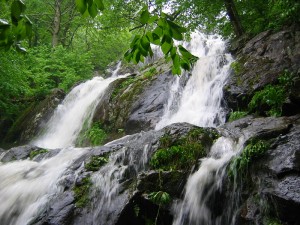Water, water, everywhere, and not a drop to drink – one of humanity’s most enduring ironies is the cruel fate, suffered throughout history by stranded seafarers, of being surrounded by clear blue waters yet dying of thirst. While private island owners may not be in danger of fatal dehydration, obtaining potable water can still be a challenge.
Fortunately, rather than going through the hassle and expense of importing tanks of water from the mainland, technology has made it possible to produce drinkable water from a variety of sources, even the sea. These are just some of the ways that creative island owners can help make their island more liveable – and avoid the sad fate of countless castaways!
Rainwater Catchers
A natural solution to obtaining fresh water, this involves simply catching rain in large containers and storing it for future use. The beauty of this elegant method is that it can be as high or low-tech as desired. Large-scale roof collection systems can drain off several thousands of gallons during one deluge – just one inch of water over a 2,500 sq. foot surface equals 1,500 gallons, enough to last a family of four ten days!
Fresh but mixed with dirt and other pollutants, this “grey water” can be channelled directly into various filtration systems. On the low-tech end of the scale, simple large plastic containers or funnels and pipes placed in strategic locations can yield a sizeable amount of water as well. Despite the overall cleanliness of this solution, it is still advisable to filter the water for contaminants that may have entered the catchers or storage containers.
Reverse Osmosis Filtration
One of the newest technologies available, reverse osmosis filtration uses pressure to force water through a semi-permeable membrane, removing particulates and a variety of large molecules. First, sediment, rust and other particulates are separated from the water using a standard filter. A second filter then traps even smaller particles, and a carbon filter removes chemicals such as chlorine. Finally, the high-tech membrane removes any remaining minerals and fine particles, down to the level of many bacteria, viruses and fungi!
In recent years, these filters became common in drought or conflict zones, used by non-governmental organizations to help those in dire need of potable water. Filters available for private use are readily available and can cost as little as five cents a gallon; however, the high water quality takes time – an entire day is often required to produce just 10-15 gallons of water. This option is best used for exceptional drinking water.
Desalination Systems
Reverse osmosis filtration can be used to desalinate a moderate amount of drinking water, but solutions exist for both wide-scale and emergency uses as well. A popular method, used since the time of Julius Caesar, is distillation – sea water is evaporated, and the salt is separated from the condensation by its weight, leaving fresh drinkable water behind. While home distillation systems can produce twice the amount of water (up to 30 gallons per 24 hours) in the same time as more sophisticated types of filtration, the heat required for evaporation means they can also be heavy fuel consumers. This accounts for the high cost of water treatment in desert areas such as the United Arab Emirates, where distillation plants can process an astounding 250 million gallons of sea water a day!
For those who fear suffering without water while lost at sea or stranded on a malfunctioning boat, an ingenious portable desalination system is a wise investment. Called the SeaPack, this small, lightweight filter comes in single-use pouches and transforms brackish sea water into a (reportedly) palatable grape-flavoured drink. Rich in electrolytes and vitamins, the drink contains almost 500 life-saving calories. Castaways will require patience, though – the SeaPack uses a slow osmotic filter that removes 97% of all salts, and it will take up to five hours to be ready to drink.
To discover more about water purification, these links may be helpful:
Watch the SeaPack in action: http://www.youtube.com/watch?v=jQzYdbg4iVk



